With gilt chandeliers 50 feet overhead and long strips of fabric draped over the windows, the theater looked like something out of a Stanley Kubrick film. The makeshift curtains ballooned in thermal updrafts above the radiators, creating rippling pockets of shadow around the edges of the room. On stage a band was tearing through a Cheap Trick tune, but the drummer hadn’t learned his part yet and the guitarist stopped strumming to stomp out the rhythm, his boots echoing in the cavernous, empty room.
Normally, Richard would be up there too, on auxiliary percussion, but he took the night off to tell me the story of how he came to Fort Lyon and got clean. Richard is 54 years old and had been sober for seven months, one of his longer stretches — discounting the six-year stint he did in prison. “But that was forced sobriety,” he said. He was making a choice now.
He was trying to tell me about losing his daughter but his voice kept getting drowned out by the amplified hair metal, so we exited the theater and stepped into the icy Colorado air. Somewhere beyond the women’s dorms, we heard coyotes chattering in the dark. Richard (who asked that I not use his last name, as did several others in this story) walked with a stiff splay-footed gait on account of his toes having been amputated last winter, frostbitten casualties of a drunken blackout in the snow.
Richard had been homeless for 20 years. He’d grown up in a small town outside of Fort Collins, finished high school, even did a bit of college, but by the time he was working in tool-and-die, and later construction, he was drinking steadily and heavily. He was employed, but struggled to keep up with the rent. He and his girlfriend sometimes slept at a local campground, and eventually they befriended the owner, a woman who looked the other way at their squatting in exchange for landscaping and mechanic work. In 2004, Richard had a daughter with another woman, but the girl’s mother was into hard drugs and drifted out of their lives, so he raised his daughter until she was two. He looks back on that period of his life through a sheen of nostalgia. “Those first two years my daughter went everywhere with me,” he said. “She went to my job, she’d be working under the car with me. The tightness that we had — everything in my life was my daughter, my daughter, my daughter.”
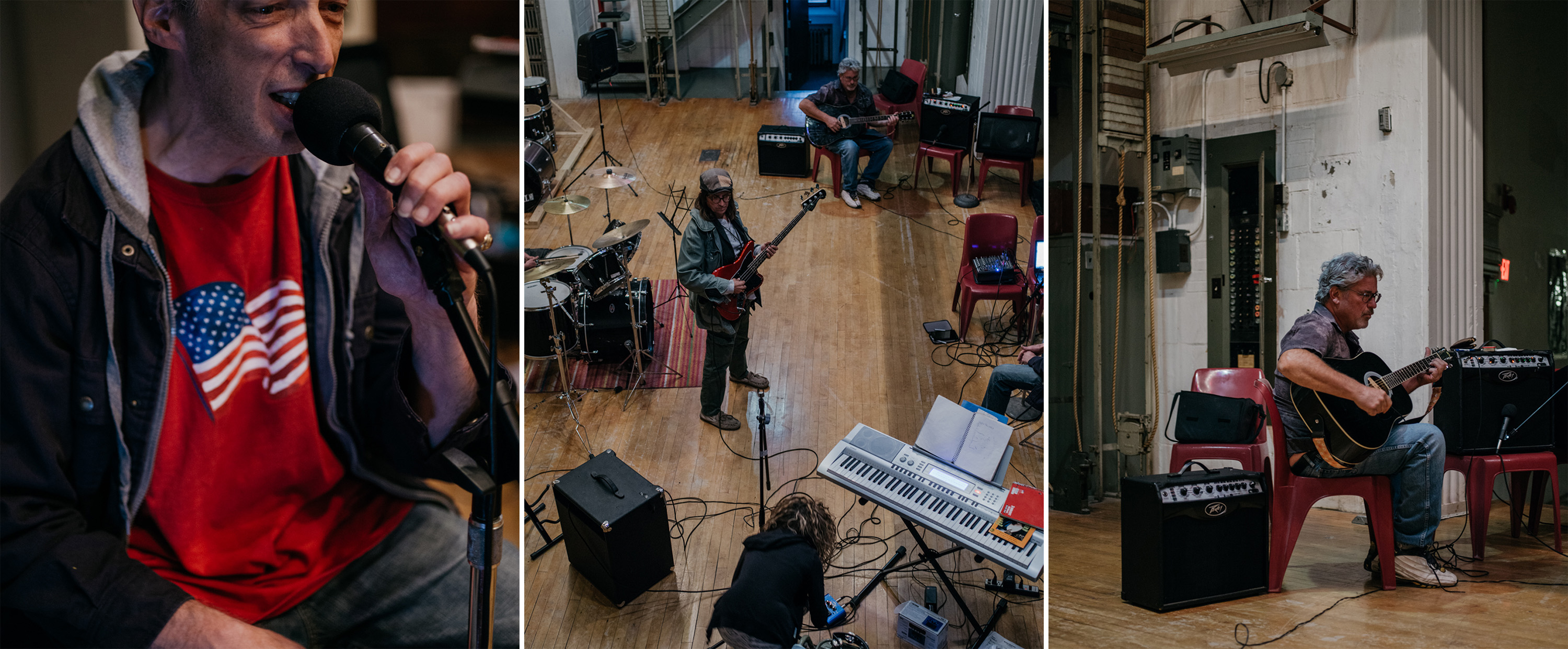
This tenuous domesticity unraveled quickly and brutally. One evening, he and his girlfriend got into an argument. They had been drinking for hours. She stabbed him, Richard said, and he retaliated by choking her until she lost consciousness. He went to prison for six years — a second-degree attempted-murder charge knocked down to several counts of menacing — and his daughter was taken into foster care. His girlfriend wandered into a haze of escalating drug use.
Richard relayed all this to me in a quiet, steady voice, his shoulders hunched forward and his eyes fixed on the ground. “It tore me apart when I went to prison,” he said. “Ripped my daughter out of my life.”
When he was released in 2012, he went looking for his ex, hoping to make amends. He was in a halfway house when an old acquaintance told him the police had discovered her body up on the train tracks, drugs and alcohol in her system. “That poor girl went through hell,” he said, pulling his long billy-goat beard taut as he talked, an anxious gesture he used like punctuation. “Including me.”
The tailspin came hard. His daughter was somewhere in the foster system; his girlfriend was dead. He stopped showering, stopped pretending to look for work, stopped doing anything other than drinking. One evening he blacked out in the snow and woke up in the hospital minus 10 toes. Not long after he got out, some men jumped him in the dark — beat him in the head with a brick — an assault that left him in a coma for three weeks. “I had two brain surgeries,” he said. All told, he spent nearly four months in the hospital.
I thought about the financial burdens that Richard had brought to bear on Colorado’s social infrastructure over the last decade. He had spent six years in state prison, had been in and out of jail many times for minor offenses, had taken several ambulance rides, had spent months in the hospital, had undergone intricate surgeries, and had sent a child into the foster care system.
But now Richard was with hundreds of other people like him: chronically homeless, addicted to drugs and alcohol, and taking part in a last-ditch attempt to reboot their lives. They had come from all corners of Colorado, of their own volition, to get clean at an abandoned Army fort in the middle of nowhere.
Somewhere on campus, a 12-step meeting had just wrapped up, and there were knots of people talking, enwreathed in clouds of smoke and frozen breath. Guitar licks filtered into the night through donated amplifiers. The band had moved on to Bob Seger deep cuts. This was Fort Lyon — something like a Betty Ford Center for the homeless — a radical experiment to rehabilitate some of society’s most vulnerable members.

Fort Lyon looks a bit like a college campus fallen into slight disrepair. The quad is fronted by a quasi-classical administration building, its massive portico propped with Ionic columns. Men’s and women’s dorms border the central green, and beyond that the land rolls for 550 acres, dotted with outbuildings and maintenance sheds, boiler plants and water pumps. Many of these buildings are locked and empty — too much territory for a skeleton crew of social workers and county employees to manage — and around campus the occasional window is blown out and boarded over, the scars of a violent hailstorm years back.
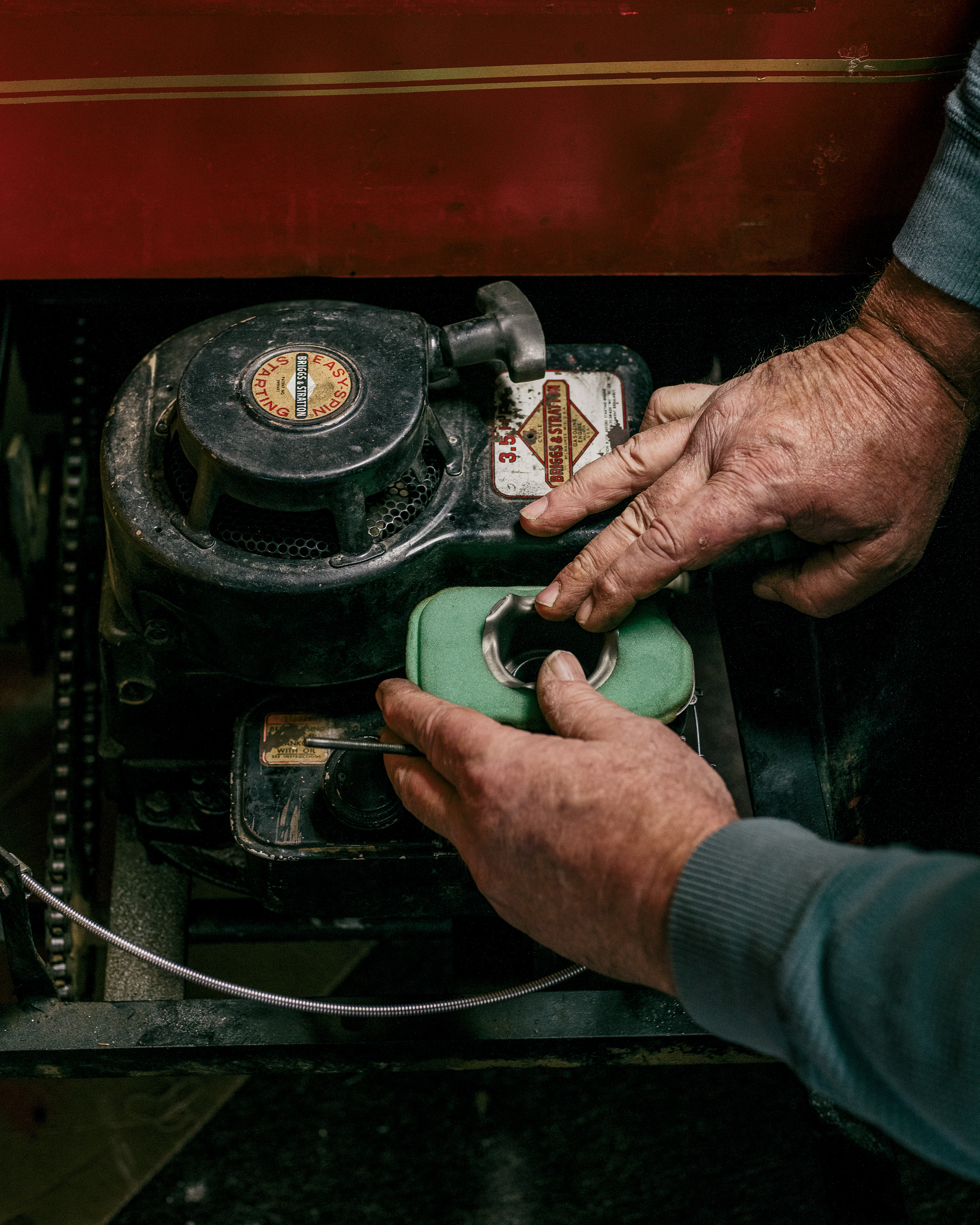
Just a few miles from the Purgatoire River, on the eastern plains of Bent County, the sprawling property has a complicated and quintessentially American history: one of violence and institutionalization, reinvention and rebirth. In 1864, Fort Lyon served as the staging grounds for the Sand Creek Massacre, in which United States militia members slaughtered a village of Cheyenne and Arapaho women, children, and elderly men. In 1906, the fort was converted into a Navy tuberculosis sanatorium, and, in the 1930s, it was reopened as a neuropsychiatric hospital by the Department of Veterans Affairs. The state of Colorado took over in 2001 and operated a minimum-security prison for a decade, but then the prison was closed for budgetary reasons.
The 2013 decision to reopen Fort Lyon as a rehabilitation center for the drug-addicted homeless was contentious. Colorado Governor John Hickenlooper — who had previously championed homeless initiatives while serving as mayor of Denver — asked the Colorado Coalition for the Homeless to draw up a program that could operate on the grounds of the closed prison, which, while empty, was costing the state an estimated $150,000 per month in upkeep. The resulting plan eventually became part of House Bill 1261, which died in the Colorado Senate before being reborn as an 11th-hour tack-on to a Department of Corrections bill — a bit of legislative legerdemain that enraged both Democrats and Republicans. Yet in just over three years of operation, Fort Lyon has had enough success to quiet many of its critics. More than 800 of Colorado’s hardcore homeless have been served there, via housing, substance-abuse support, and education — mostly men (80 percent) and mostly over the age of 45 (70 percent). The program boasts a dropout rate of 38 percent — significantly lower than the national average for rehab programs — and nearly 200 people have graduated into housing around Colorado (mostly via Section 8 vouchers and other subsidized housing assistance, although the program estimates that 15 percent of graduates each year leave with secure employment and are able to pay their own rent). I spoke with a number of residents who had been both actively using and homeless for decades — and who were now two years sober, employed by Bent County, and taking college classes at Fort Lyon. In October of 2015, the El Pomar Foundation, which supports social endeavors across the state, awarded the Colorado Coalition for the Homeless its annual Award for Excellence for its work at Fort Lyon, and major private donors like the Walton Family Foundation have supported the program with sizable gifts. Now administrators in Illinois, Georgia, and Nebraska have started exploring whether Fort Lyon’s model is replicable in their states.
When I visited in November of 2015, there were 225 people living at this — Was it a commune? A neighborhood for the homeless? A sober utopia? Fort Lyon’s administrators were still trying to figure out what it was exactly. The Colorado Coalition for the Homeless refers to it as a “supportive residential community,” but the precise nomenclature is currently the subject of a high-stakes debate between the state of Colorado and the federal government that may put the entire program at risk.

Down a quiet tree-lined street, past an empty playground and a baseball diamond, are rows of former officer housing, where residents are able to live once they demonstrate a serious commitment to recovery. Joe Trotter, who has lived at Fort Lyon since it opened, took me there one evening. “Come on,” he said when I passed him walking his bike across the quad. “I want you to see this.”
As we walked he proudly pointed out decorative flourishes that people had added to their houses: an American flag here, some wind chimes there, flowerpots on the stoop in defiance of the cold. If I squinted, we could have been walking through some suburban anytown.
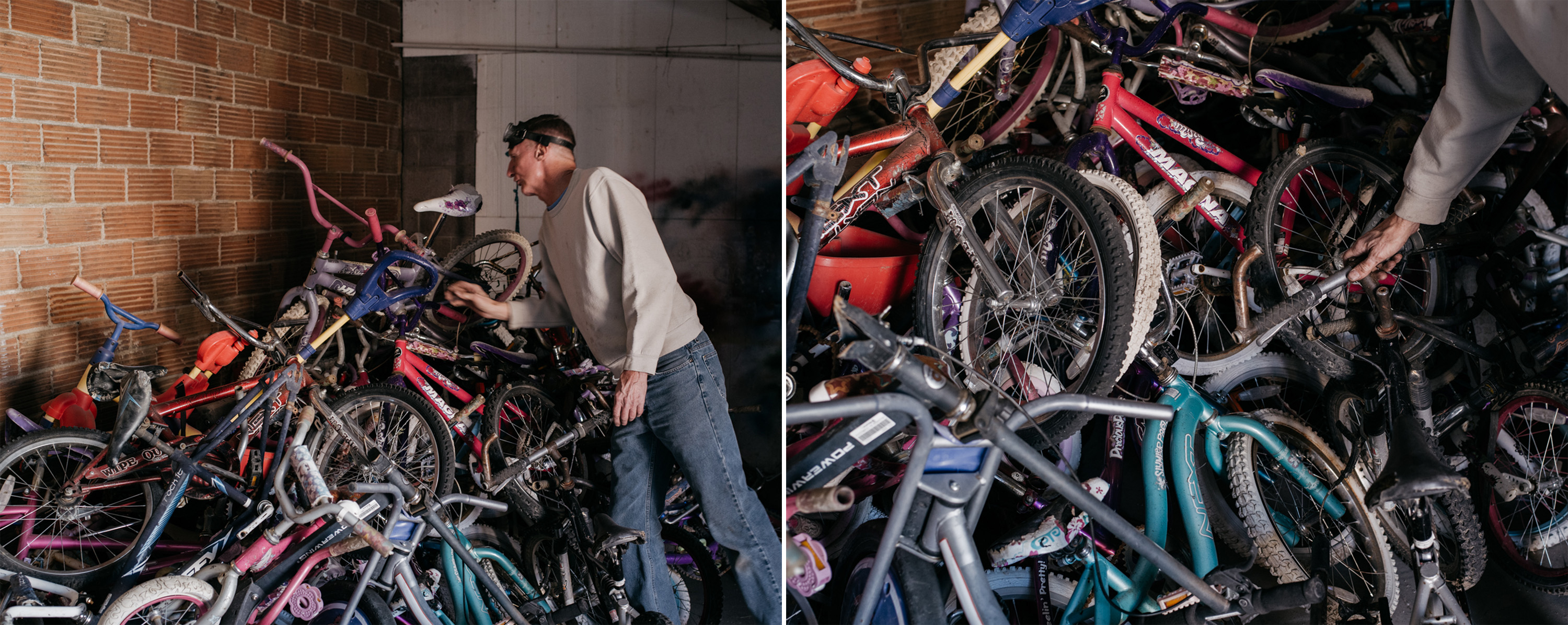
His pride in his neighborhood seemed well-founded. Joe and other early residents helped rebuild Fort Lyon, literally, after it lay fallow for two years. His buddy Bart had redone the flooring in these old houses. Linda had sewn the hundreds of curtains that now hung throughout the grounds. Another housemate, Jeff, had reworked the plumbing in several buildings. Residents had fixed sewage lines and cleaned out valves in water pumps. Joe had repainted many of the buildings himself, securing part-time painting work with Bent County in the process. “Everyone here has something to give,” he told me.
Joe is 56, with a salt-and-pepper goatee and scarred, muscular forearms. He grew up on the south side of Chicago but headed west in his 20s, trading expressways and El lines for rural Montana and, later, Wyoming, where he skewered errant candy wrappers in national parks (“Believe it or not, there are people in America who throw trash into the geysers at Yellowstone”). In Wyoming he met a man who mentored him in furniture-making, and Joe realized he had a knack for it. He started his own company, doing high-end refurbishing and woodworking. He was making good money. “By the time I left Wyoming,” he said, “I was flying on a Learjet.”
In Colorado he got married — to a successful woman, the branch manager at a local bank — but this is where he began to lose control of his comfortable life. He was drinking too much — just at night though — then a little coke too, and suddenly he was bringing drugs to work, coked up around the clock. He and his wife split, and haven’t spoken since. “She’s out in Aurora, I think,” he told me. “Hopefully she’s had a good life.”
Joe spent the next eight years living in impermanence. “Instead of doing anything for my situation, I went to the streets,” he said. “Sometimes I’d get a place for a little while, but the last part was straight concrete. I slept on the concrete, ate on the concrete, made money on the concrete. There wasn’t no going to the shelter because it was cold outside — just concrete.”
A string of health emergencies led him to re-evaluate. “Before I got to Fort Lyon, I was hospitalized six times in 90 days,” he said. “Pneumonia, broken jaw, blood clots from sleeping on the pavement.” When a social worker in Denver told him about an experimental place that was about to open, he thought: anything but this.
That was more than three sober years ago. When I asked him how Fort Lyon gets its positive results, Joe mentioned “the store.” One of Fort Lyon’s newer features, this rented storefront in the nearby town of Las Animas is run by residents, with the shelves and display cases stocked with wares made primarily by residents: handmade jewelry, carved decorative plaques (“Let’s go, Broncos!”), oil paintings, crocheted blankets, knit hats and scarves. As Fort Lyon’s first wave of residents started getting sober in 2013, an outburst of suppressed creativity took hold around the campus. One man opened a barbershop in his room. Another began assembling bicycles from scavenged parts. Joe Trotter started building furniture again, that old muscle memory returning once he’d been clean for a while. Soon, a hyperlocal economy of bartering and selling these products arose at Fort Lyon, and the staff decided to formalize the process. With the help of Bent County, they rented the storefront and set up shop.

The store filled a hole in the town’s economically depressed main strip while providing an outlet for all the handiwork. Over the 2015 holiday season, it took in around $4,000. Fort Lyon residents keep the money they earn, minus a small percentage that goes toward paying utilities.
As the store grew, people from the surrounding area started bringing in old furniture for refinishing, and Joe eventually had to hire more staff to deal with a backlog of orders. The store — now christened Market on 6th — has become a self-sufficient and established part of the town, with local Las Animas citizens selling crafts there as well. A plan is in the works to open the back of the store as a kind of community center, a place that can host Alcoholics Anonymous meetings and the like.
Everyone follows their strengths, Joe says; this is what makes Fort Lyon work. The store is more than a store. It is an avenue for empowerment, providing a way for addicts to regain a sense of control and usefulness in their lives.

Social service agencies tend to suffer from inertia, says James Ginsburg, director and co-founder of Fort Lyon. They can be hesitant to change how things have always been done. The result is that, when people drop out of a program like rehab, the staff can say: “Well, it’s not our fault the program didn’t work for you.” Ginsburg, who has worked in homeless advocacy for the last 25 years, has the demeanor of a quietly charismatic pastor. The vision for Fort Lyon, he told me over lunch, was to let the needs of the people who came there drive the structure of the program, rather than create a rehab program and make people comply. “Person-centric, not program-centric,” is how he phrased it. “We want to be open enough that residents can come to us and say: This is what I need.” It is a mindset that requires immense trust in a population that very few people are inclined to trust.
Ginsburg mentioned a man who came to him with a plan to build kaleidoscopes as part of his recovery. “There’s this tendency with social service programming to go, ‘No, we don’t build kaleidoscopes, that’s not what we do here,’” he said. “Well, of course not! No one builds kaleidoscopes — no one has a kaleidoscope policy.” Instead, the staff at Fort Lyon found a way to get the man the materials he needed to build kaleidoscopes. “That guy was totally out of it when he got here,” Ginsburg said, “and he has blossomed.” His kaleidoscopes are now displayed around campus and for sale at the store.
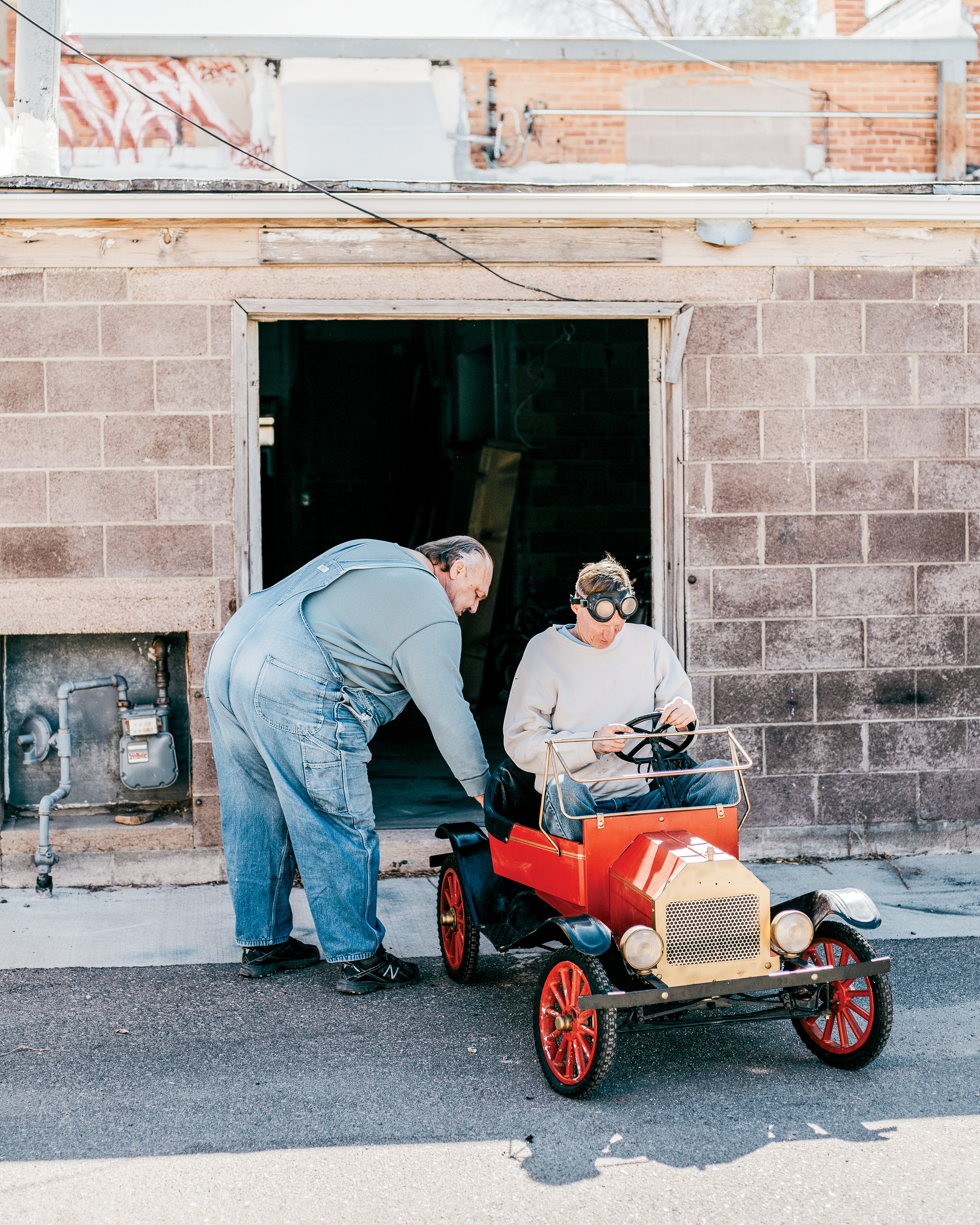
“Instead of always looking at pathology, you can look at the other side of the coin,” Ginsburg said, echoing Joe Trotter’s point. “Why don’t we try to enhance their strengths instead of trying to fix their pathology?” Everything at Fort Lyon has sprung from this mindset — what social workers refer to as a “strengths-based approach,” a model that was developed at the University of Kansas School of Social Welfare in the mid-1980s. In essence, the idea is to allow those in rehab to direct their own recovery. “We’ve got 14 different support groups that meet regularly around campus,” Ginsburg told me. “We didn’t start any of them.” They were all started, publicized, and maintained by residents.
Throughout lunch Ginsburg spoke of flattening the hierarchy, of empowering people, of inherent human dignity. Ultimately, he said, much of Fort Lyon’s philosophy came from Catholic social teaching. “These are people who have experienced immense trauma in their lives, and have developed questionable coping skills as a result. But these are good people. These are smart people. These are people with real strengths. And we can help cultivate those strengths.”

As tends to be the case with radical experiments, Fort Lyon is strikingly out of step with current thinking about homelessness and substance use. Over the last decade the general trend has been to funnel resources toward Housing First programs, which provide permanent housing to people — usually in the urban settings where the vast majority of homeless people live — regardless of whether they are taking steps to address their substance abuse issues or not. The cure for homelessness, Housing First proponents argue, is homes.
In their eyes, a place like Fort Lyon looks decidedly retrograde — bussing people to a desolate stretch of high prairie and housing them there for months or years in order to get them clean. Critics accuse the program of further marginalizing an already beleaguered population. “This can look antiquated in terms of isolating people for addiction support,” Ginsburg said, contrasting it with the Housing First philosophy. But no one is forced to come and no one is forced to stay. “If the residents didn’t want to be here,” he said, “we wouldn’t do it.” Ginsburg understands the contrast firsthand, having run Housing First programs for six years in Denver. “I’m a huge advocate of Housing First,” he told me. “But there’s a bit of a dirty secret about Housing First, and that is the addiction part of it. Housing First will always claim a high retention rate,” he said. “That’s after one year. But if you look, every year it drops, and, after five years, it’s maybe half of what it was.” Ginsburg claims the huge drop-off over time is attributable primarily to substance use. “There’s an argument that Housing First proponents make, that everything should be done in vivo,” he said. “That you shouldn’t take people out of their environment. But for heavy substance users, in vivo is counterproductive. Your vivo is killing you.”
“Having run Housing First, the thing that really motivated me to open this place was walking in on people dead in their housing,” he said. These were people who had moved into apartments through his programs. He found one man with a needle still in his arm. Another was slumped backwards in a recliner, a lethal cocktail of rubbing alcohol and orange juice at his side. A complex hierarchy of needs exists for people who are homeless. In Ginsburg’s opinion, housing should not always come first: “Fort Lyon is for people who are dying in their addiction.”

Residents at Fort Lyon are given a surprising amount of individual freedom. During the first 30 days, you are expected to attend drug- and alcohol-education classes and work with case managers to formulate a recovery plan. The only ongoing expectation is that you attend a community meeting three mornings a week. After that, your time is yours: play basketball, go for a walk along the reservoir, sleep for 20 hours, talk to your case manager, go to classes that are offered on campus by Otero Junior College. Some people swore by the 12-step meetings. Others avoided them entirely. Every resident I spoke with — all of whom had been in some kind of addiction program previously — marveled at this radical autonomy. The standard rhythms of rehab, hustling from meeting to chore to counselor to meeting to meal to chore, were absent at Fort Lyon. This is no accident. Ginsburg explained it as an attempt to break the addict mindset: always onto the next thing, the next stimulus, the next score.
Amid shelves stocked with current issues of National Geographic, Poetry, and ESPN The Magazine, a man named Jan told me how he’d organized the library’s donated books by subject. He was currently putting together a literary magazine for Fort Lyon as part of his recovery.
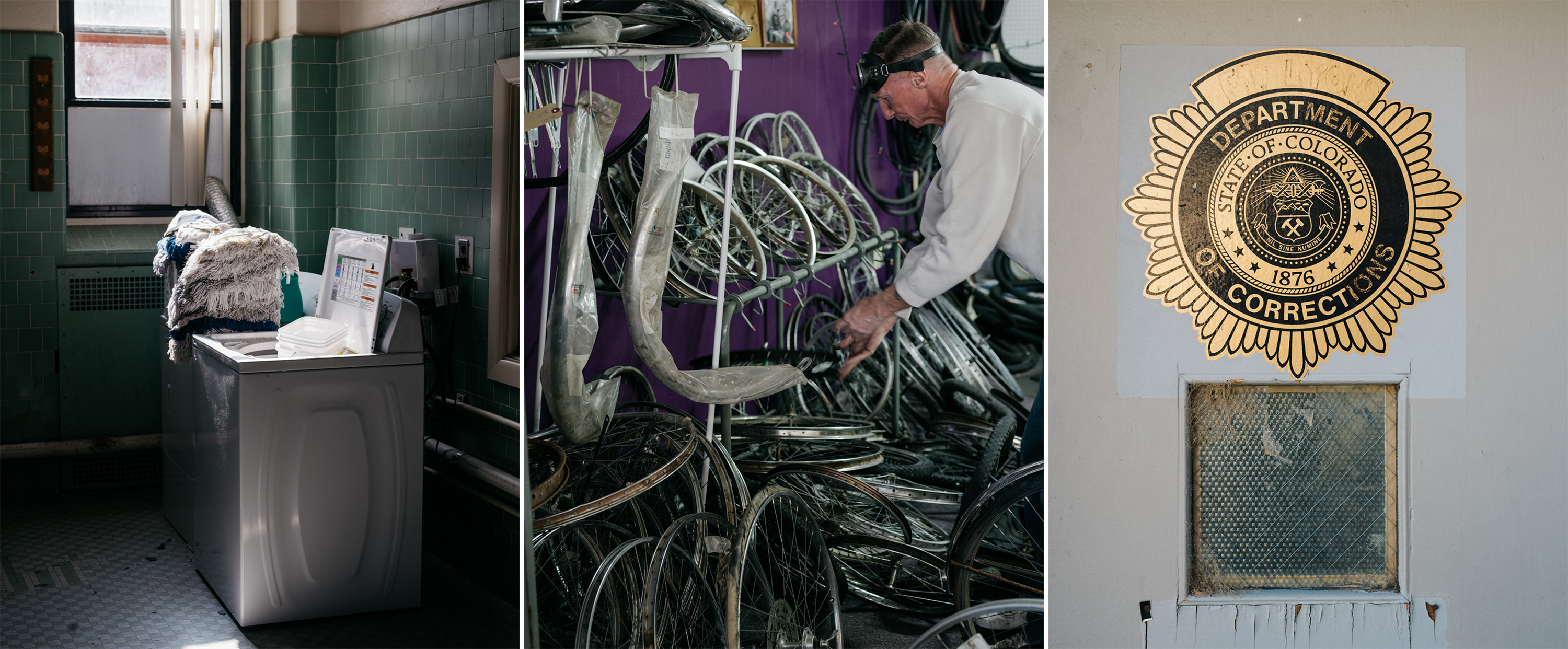
In the art studio, Diane was making clay angels. In a previous life she had been a nurse, 25 years on the job, but when her husband died she slipped into deep depression, got into drugs, lost everything. While homeless in Boulder she was raped and assaulted. She started smoking crystal meth and butted heads with the police. After nine years on the street, she made it to Fort Lyon. She’d been clean for a year and a half when I spoke with her.
Tater was an old Navy guy — same story: drinking, homeless, decade — who got sober at Fort Lyon. After five months he decided to challenge himself with a test. He told the staff he wanted to go on a two-week pass back to Denver, to help a buddy renovate his house. The staff said sure. In Denver he walked through old hangouts, and friends offered him drinks. “There was temptation,” he said, but he didn’t cave to the pressure. Still, he knew he wasn’t ready for permanent re-entry and returned to Fort Lyon when his pass was up.
Associate director Phil Harrington, who co-founded the program with Ginsburg, seemed to provide an appropriate counterpoint to the director. Where Ginsburg is quiet and controlled, Harrington is all energy and passion. After high school he had gone to Calcutta to work with Mother Teresa, then later worked as a cop, an investigator, and a high school teacher, before dedicating himself to homeless advocacy. He struck me as exactly the kind of cop you’d want walking the beat in any neighborhood: hard-nosed, deeply compassionate, and conversant in the ideas of structural violence.
“Recovery works,” he said, leaning forward across his desk, “but you need time and space. That’s what makes the difference here: It’s the long-term.” While most rehab programs last 30 or 90 days, the program at Fort Lyon lasts up to three years. “You’re not on some kind of clock. The people coming here are at the end of the line. It isn’t like they had a bad semester, or like shit hit the fan last Thursday — this is decades of abuse you’re dismantling here. That takes a minute.”
The staff prefer that new residents lay low for their first several weeks at Fort Lyon — no chores or college classes or looking for jobs. “My experience with drug addicts and alcoholics is that the brain is hijacked,” Harrington told me. “You need a little time to let the fog clear.”
Once they take a step back from survival mode and get comfortable, Harrington said, long-term substance users often exhibit familiar patterns of behavior. “At first they’re faking it. They’ve been there six months, telling you about their progress, doing the things they think they have to do. They want to show they’re compliant.” But at Fort Lyon there’s nothing to be compliant with. “You can’t jump over the hard work of getting sober,” he said. The change has to be internal.
“Anyway, if you tell people they have to do something, they’re not going to do it. Alcoholics are defiant.” Harrington spoke from a position of authority. Like several case managers at Fort Lyon, Harrington himself had been in recovery for years. “So I will tell you what worked for me, getting sober, but I’m not going to tell you what will work for you. And that’s disconcerting to some people. They’re like: Tell me what to do so I can resist.” He sat back in his chair and said: “Nope. I’m not the vice principal of the high school. That attitude hasn’t worked for you your entire life. But we will embrace you and we will support you.” Given enough time and space, Harrington said, people find their own way. He described a process he had witnessed time and again at Fort Lyon: People eventually came to realize that there was no one to fool, no one to please, no one to rebel against. Fort Lyon was simply a community of like-minded people trying to help each other.
“It is amazing to see,” he said, “when that all falls away — when people realize they can just be straight with you.” He had gone uncharacteristically quiet, his voice suddenly tender. “You surrender — and then it starts. All of a sudden the whole universe conspires to help you get better.”

Despite its apparent success, Fort Lyon’s future is uncertain. Money is always tight, and, as a state-funded institution, the injection of politics can turn any budget consideration into a fight for survival. In 2015, Fort Lyon lost seven of its 17 full-time case managers to funding cuts, effectively doubling caseloads. Ginsburg seemed exhausted by this aspect of his role. He had spent 25 years working in shelters, in the hospital psych unit, doing street outreach, working with people under bridges and in encampments. “The biggest thing I’ve had to adjust to,” he said, “are the politics. When I’m in Denver, it’s not reality — it’s theater. I’ve wanted to give up a few times.” He exhaled and stared at his desk. “Then I come down here and think: Fuck, it is worth it. It sustains me.”
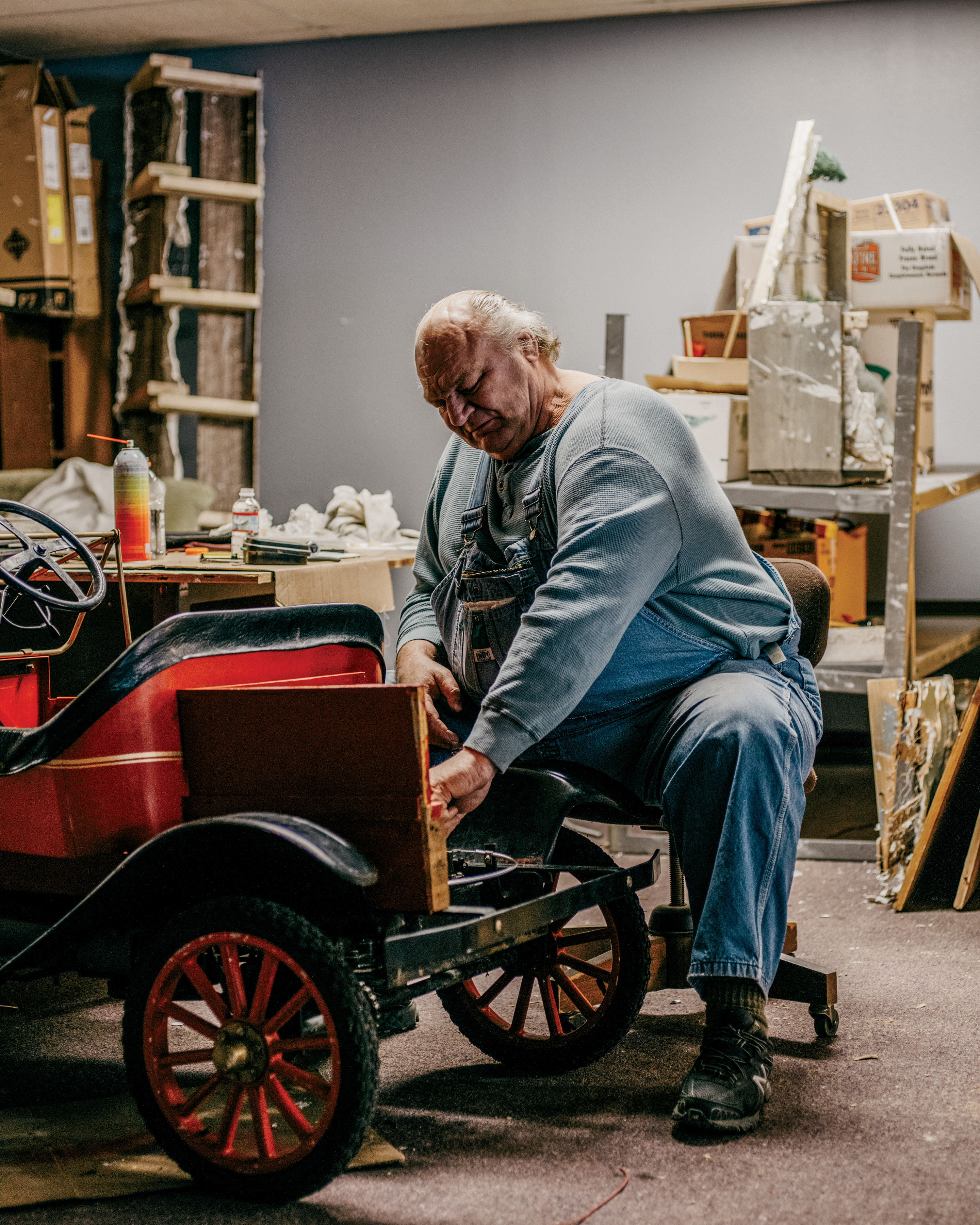
In a landmark 2002 study, Dennis Culhane, one of the preeminent researchers on the economic costs of homelessness, found that homeless people with severe mental illness cost New York City around $40,000 per person per year. Philip Mangano, the homeless policy czar under President George W. Bush, says the average cost, drawing on data from 65 cities across the U.S., can range anywhere between $35,000 and $150,000 per person per year. Colorado claims its average cost is around $46,000 in reactive expenses alone (jail, police, courts, detox, emergency room, medical). By way of contrast, Fort Lyon spends just $19,825 per person per year to actively rehabilitate and reintegrate them into society, returning people to housing and into the workforce. “We have people coming in here who cost the state hundreds of thousands of dollars last year,” Harrington said. “So all of a sudden it becomes cost-effective when you say, ‘Let’s support people for a minute.’ That’s a good investment!”
But semantics now pose another threat to Fort Lyon. The federal government is currently deciding whether or not to categorize the facility as an “institution for mental disease,” a classification that generally pertains to psychiatric hospitals. If labeled as such, Fort Lyon would not only lose access to Medicaid funds for residents, but also have to repay the funds it received over the last three years — resulting in a significant budget shortfall that the state would be unlikely to cover. Residential programs like Fort Lyon exist on a spectrum, with peer-led programs (non-IMD) at one end and clinician-led programs (IMD) — places staffed by physicians and health-care professionals — at the other. Ginsburg and Harrington specifically designed Fort Lyon as a non-IMD project. The state of Colorado also performed an audit, agreed that the program did not meet IMD criteria, and argued that point to the Centers for Medicare & Medicaid Services (CMS), the federal agency tasked with this kind of oversight. Now CMS has conducted its own analysis. In December 2015, the federal agency met to write up its decision, but, as this story went to press, the verdict had still not been released, leaving Fort Lyon’s future hanging in the balance.

Richard, meanwhile, was optimistic about the shape his recovery was taking at Fort Lyon. Band practice was immensely therapeutic, but nothing compared to the fact that he had reunited with his daughter. He was visiting her monthly now, with the encouragement of the girl’s foster mother. “At first they were worried about how she’d react,” he told me, because it had been more than six years since the two had seen each other. “But when it happened, we both just got the biggest shit-eating grins on our faces! It was like we were never apart.”
The night we talked outside the theater, he said he had started planning for future employment, looking into a renewable-energy program offered by Lamar Community College, which also teaches classes at Fort Lyon. He had also embarked on a plan to collect scrap metal for recycling. The staff had encouraged him, and his operation had grown to the point that he needed to hire another resident to help him. As he explained this to me — that he was someone else’s employer — he shook his head in amused wonder.

With his next scrap load, he said, he’d have saved enough money to buy a tablet. His daughter was taking piano lessons now and he wanted to start video-chatting so he could accompany her on the drums.
Before he headed back to band practice, Richard told me about the day he arrived at Fort Lyon. He’d heard about this strange program from a social worker in Denver and decided to see what might happen for him there. But when the van pulled up he realized he already knew the place — he had been incarcerated there in 2001, when Fort Lyon was a prison.
“I was like, ‘Oh my God! There ain’t no fence!’”

At the community meeting the next morning, as 200-some people filed into the main activity room and found seats, I chatted with Linda, curtain-maker extraordinaire, who told me she had a dream the previous night in which she smoked crack. “I haven’t touched that stuff in two years, but in my dream I was right there. I could taste it, smell it.” She shook her head, laughing and uncertain. “Crack is an evil bitch. I was so relieved when I woke up sober.”
Ginsburg strolled back and forth with a microphone, talking about healthy ways to cope with stressors. The crowd was rapt save for a young man, new to the program, who was twisting and agitating in his chair. While Ginsburg was talking, the man sprung from his seat and stalked angrily across the front of the room and out the door. If the director noticed, he didn’t react, and, after a few minutes, the young man returned, discreetly now, having temporarily quieted whatever demons seemed to be dogging him.
As the meeting drew to a close, Ginsburg asked if anyone was celebrating a milestone today. A few people stood and mentioned five months clean, nine months clean, and each time the crowd applauded. Finally a woman in her 50s stood up. She had curly hair and looked like she could have been a librarian or an accountant. Ginsburg handed her the microphone.
“Hi,” she said quietly. Her voice was wavering. “I’m an alcoholic.”
The last time she drank, she almost died, she said. She looked for a moment like she was going to continue telling the story, but then cut herself short, lost somewhere in the past.
“As of yesterday I’m 30 days sober,” she said, and the room broke into wild cheering. Ginsburg walked over and hugged her and the woman smiled.
Before handing the mic over, she turned back to the community.
“Now I’m trying for 31.”





